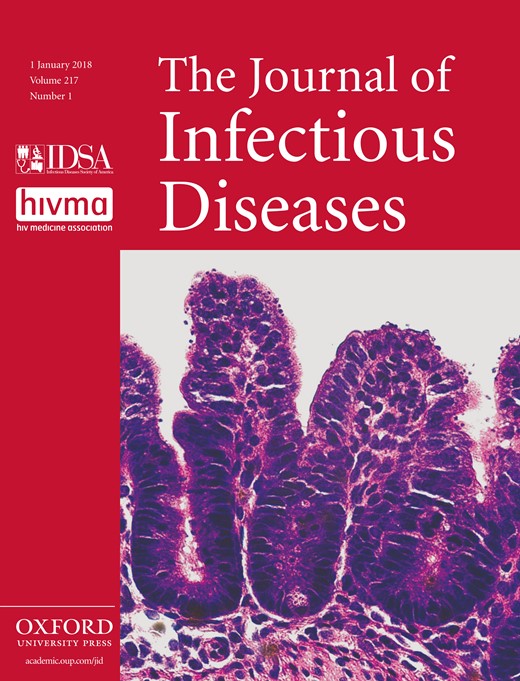-
PDF
- Split View
-
Views
-
Cite
Cite
Danuta M Skowronski, Catharine Chambers, Gaston De Serres, Selection Bias in the Assessment of Frailty and Its Role in Influenza Vaccine Effectiveness Evaluation Among Elderly Adults, The Journal of Infectious Diseases, Volume 217, Issue 1, 1 January 2018, Page 168, https://doi.org/10.1093/infdis/jix548
Close - Share Icon Share
To the Editor—In their recent article, Andrew et al assessed the impact of frailty on estimates of influenza vaccine effectiveness (VE) against influenza-related hospitalization in elderly adults ≥65 years old [1]. The authors concluded that “frailty is the most important confounder to take into account when estimating VE for older adults” and that “not accounting for frailty would have led to underestimating VE” [1]. Although such strong assertions may seem to make some intuitive sense, they go far beyond what their data can support.
Among their study participants, frailty information was not available for almost half (44%) of cases but was missing for only 4% of controls. In the primary analysis presented in their Table 3, the authors reported an unadjusted VE against any influenza of 45.0% (95% confidence interval [CI], 25.7–59.3%) that they directly compared on the same row to a VE of 58.0% (95% CI, 34.2–73.2%) after adjustment for frailty and other covariates. This side-by-side comparison of point estimates suggests a pronounced role for frailty in VE adjustment. However, it is misleading because the unadjusted estimate was derived from the full cohort of participants whereas the frailty-adjusted estimate was derived from the subset that excluded at least 44% of cases with missing frailty data—a critical nuance understood from the Methods, but not flagged by appropriate display of the differing sample sizes contributing to unadjusted vs adjusted models.
In sensitivity analysis when unadjusted and adjusted estimates were instead derived and compared based on the same subset of patients with known frailty information, the VE was similar in unadjusted and frailty-adjusted models (55.9%; 95% CI, 32.6–71.1% vs 58.0%; 95% CI, 34.2–73.2%). The VE in participants missing frailty data was substantially lower (35.4%; 95% CI, −2.3–59.2%)—an indication of selection bias that would largely explain the increase in VE from the unadjusted model (ie, 45%, based on the full cohort) to the frailty-adjusted model (ie, 58%, based on the subset excluding those with missing frailty data). All other subtype- or lineage-specific estimates displayed in Table 3 would also be affected by the same methodological bias.
This analysis of the impact of frailty on VE in the elderly was furthermore limited to a single season (2011–2012) characterized by a mix of both influenza A(H3N2) and A(H1N1)pdm09 subtypes and with overall influenza type B predominance. The role of frailty was mainly assessed against the combined influenza “all strains” outcome. Such a pooled approach may conflate frailty effects with age-related variability in hospitalization risk by influenza type/subtype. Given the particular burden of influenza A(H3N2) in the very old [2, 3], subtype-stratified analyses across multiple seasons, including those with greater A(H3N2) contribution (such as 2010–2011, 2012–2013, 2014–2015 and/or 2016–2017) would be needed to properly assess the independent role of frailty in VE evaluation. As the same hospital-based network has been monitoring VE annually for multiple seasons in Canada, it is unclear why these additional seasons’ data were not utilized.
In summary, the observed “frailty bias” in VE estimates for the current study can largely be explained by differential selection bias related to missing information for cases but not controls, and for which confounder adjustment would be inadequate to correct. It is a leap to imply, as the authors do, that a lower VE among patients with missing information establishes a central role for frailty in VE findings. Pending further evaluation, that assertion remains speculative.
Note
Potential conflicts of interest. G. D.S has received grants unrelated to influenza from GSK and Pfizer and travel reimbursement to attend an ad hoc advisory board meeting of GSK also unrelated to influenza, and has provided paid expert testimony in a grievance against a vaccinate-or-mask healthcare worker influenza vaccination policy for the Ontario Nurse Association. All other authors report no potential conflicts. All authors have submitted the ICMJE Form for Disclosure of Potential Conflicts of Interest. Conflicts that the editors consider relevant to the content of the manuscript have been disclosed.




